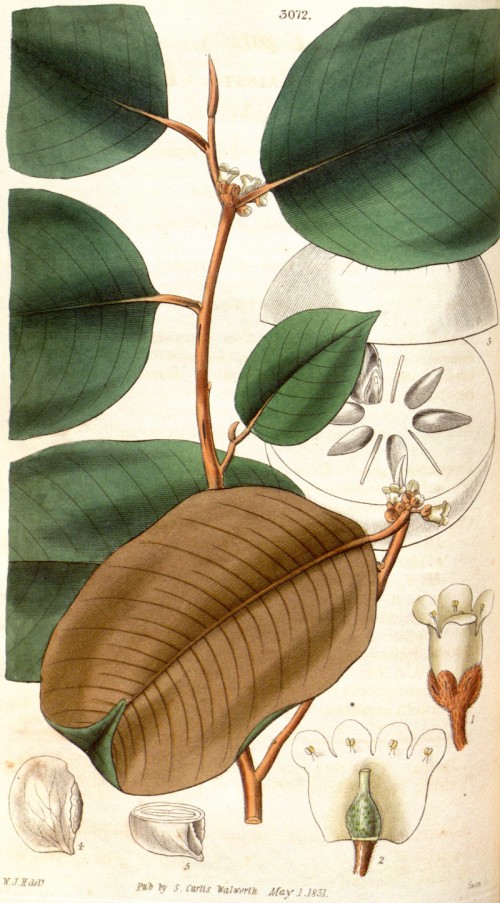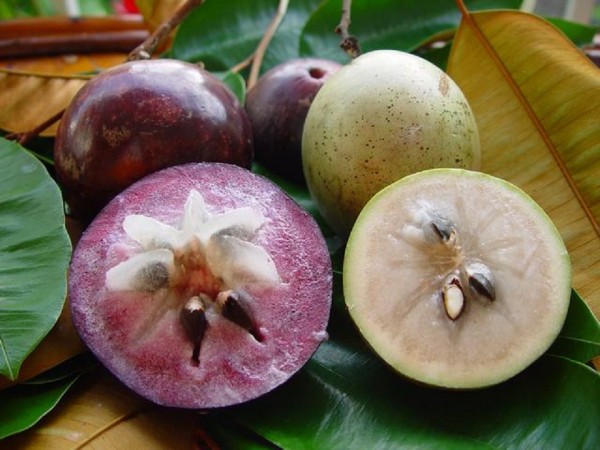Dies ist eine alte Version des Dokuments!
Chrysophyllum cainito L. - Sapotaceae - star apple, caimito tree, caimito (span.), Sternapfel
Evergreen tree, up to 2om high, native to the Caribbean, naturalized and cultivated in Central America and Southeast Asia; leaves alternate, oblong-elliptic to oblanceolate-elliptic, entire, upper side glabrous, abaxially golden-brown; flowers tiny, purplish white, sweet fragrant; fruit globose, usually purple to black (or red, brown, greenish-yellow). The edible fruit pulp is white, soft, and milky.
One hundred and four compounds were identified in the aroma concentrate from C. cainito fruits growing in Cuba, „… of which (E)-2-hexenal, 1-hexanol, limonene, linalool, α-copaene and hexadecanoic acid were found to be the major constituents. The presence of many terpenic compounds is thought to contribute to the unique flavour of the star apple fruit.“
[Volatile constituents of star apple (Chrysophyllum cainito L.) from Cuba., Pino, J., Marbot, R., Rosado, A., Flavour and fragrance journal, Vol.17(5), 2002, 401-403]
The fruits contain polyphenolic antioxidants, mainly (−)-epicatechin, but also (+)-catechin, (+)-gallocatechin, (−)-epigallocatechin, quercetin, quercitrin, isoquercitrin, myricitrin, and gallic acid.
[Polyphenolic antioxidants from the fruits of Chrysophyllum cainito L.(star apple)., Luo, X.D., Basile, M.J., Kennelly, E.J., Journal of agricultural and food chemistry, Vol.50(6), 2002, 1379-1382]
Main sugars (330mg/g d.w.) of ripe fruits from Thailand were maltose (113mg/g), glucose (99mg/g), and fructose (117mg/g).
http://www.thaiscience.info/Article%20for%20ThaiScience/Article/1/Ts-1%20phytochemicals,%20vitamin%20c%20and%20sugar%20content%20of%20thai%20wild%20fruits.pdf

Curtis’s Botanical Magazine, vol. 58 [ser. 2, vol. 5]: t. 3072 (1831) [W.J. Hooker]
http://plantgenera.org/species.php?id_species=240774
 picture source Zoom's Edible Plants
picture source Zoom's Edible Plants
